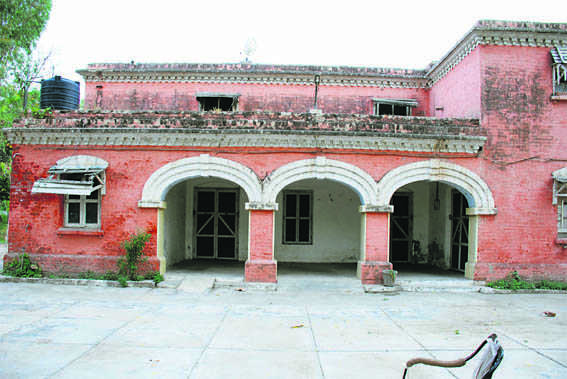Canal Colony childhood
SIX decades ago, there were no television sets, computers, mobiles or any other gizmos for amusements. But there was mud, water, canals and rivers to keep us children busy; it was a joy to get dirty as we played with the elements of nature.
We invented our own games, and then there was hide-and-seek that added mystery to the sprawling ‘kothis’ of the colonial-era canal colonies. Huge houses with rooftop chimneys, verandas, winding stairways, outhouses and giant banyan trees provided ample hideouts. It was a good place to grow in one’s wonder years.
Recently, I took a trip down memory lane by visiting 7 Canal Colony, my childhood home at Ferozepur, where my father had been posted in the early 50s. The British Raj ‘kothis’, with gardens on many acres, vegetable fields, cattle sheds, umpteen servant quarters, were certainly not a model of an equitable lifestyle. And not surprisingly, the first resident posted there had been a Mr James L Roy, from 1921 to 1923.
On entering Ferozepur, it felt the place was still in a time warp. The old house built in brick and lime mortar, with thick walls and nearly 20-feet ceilings supported on jack arches and vaults, was intact, though in a decrepit state. The old, colonial architecture with colonnades, copings and decorative cornices held its majesty and grace.
Blurred images of making swings from gnarled branches of the giant banyan tree, which we climbed like little monkeys, and the sting from bees came alive! Expert ‘honey hunters’ would arrive one day and smoke out the bees from the dangling hive to squeeze out a pailful of sweet, fragrant, pure honey.
On hot, sultry summer nights, it was slumber time under the stars. Inside the mosquito nets, a full moon would send silver beams light, which would cast dappled shadows on the white sheets. We heard frightening stories of notorious dacoits from old retainers, with our mouths agape, till our parents mercifully returned from late club nights.
On special occasions, when my father was in a good mood, he would take us along to the headworks, where the irrigation department maintained a fleet of inspection river crafts, including a fancy motor launch named after my sister Arpana. The picnics in the launch were memorable. Lunch was served by a bevy of bearers in cummerbunds, topped by ice-cream churned in a bucket and mangoes chilled with the icy river waters.
But as a little boy, my heart was always in the engine room at the rear, where Teja Singh, a veteran, was the boss. He had a tender heart beneath a crusty demeanour and he would let me playfully hold the rudder for short spells when the launch was in tranquil waters.
The journey back to my childhood had its defining moment when I stood in front of the honour board of incumbents who had held the office of the ‘SDO Headworks, Ferozepur Barrage’, since 1924. My father’s name stood at serial no. 37, amidst the company of Mr Lowly, Mr Blench, Mr Hall, Rai Sahib Lala Parmanand and others.
I saluted the antique board and returned home.









